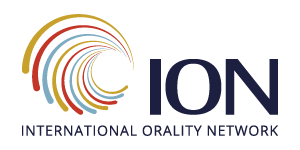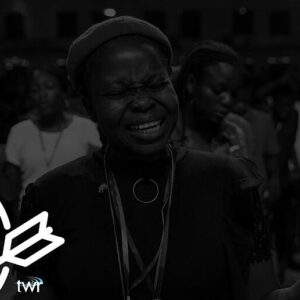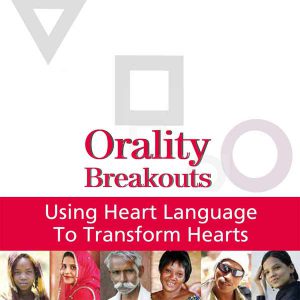The following is a chapter from the book ‘Orality Breakouts – Using Heart Language to Transform Hearts‘. A chapter will be posted here each week.
Chapter 8 – Media that Transforms Nations
By Calvin and Carol Conkey
Media—by all possible means!
Small roadside fires lit our way as we walked dusty cobblestone lanes in the foothills of India’s Himalayas late one cold winter night. As we passed villagers squatting around steamy pots of rice and lentils, and women selling meals to local passersby, we saw flashing lights in the distance, and followed the path. Entering a dingy room, we saw an unlikely sight: several Tibetan youth crowded over video arcade games. The next shop held floor-to-ceiling videos, including Back to the Future 2, which at that time had not been released to theaters in America! Media had captured the attention of these remote, unreached people.
Crafting the message
Since we started the media ministry Create International in 1989, the many accounts we’ve received have convinced us of the essential role of media in discipling the nations. From the interest stirred by new technologies like iPods, to the heart response to a message communicated through traditional art forms, the Spirit-led use of media to impact individuals and nations is an enormous factor in our effectiveness to fulfill Jesus’ mandate to disciple the nations. The test of effective media is in seeing souls enter the Kingdom of God and communities transformed. Here’s a story of how media and technology are being used in discipling remote and unreached people around the world.
Case study: the Komering of Indonesia
Not long ago, a short-term ministry team nervously stepped into the small home of a Muslim family in the highly restricted area of South Sumatra, Indonesia. The two team members sat on the only stools available as the others gathered around on the dirt floor. Through an interpreter, they explained that they had come to show a new video in the Komering language. The family smiled approval and removed a lace cloth to reveal a large television set. As the visitors silently prayed that their video would be a powerful testimony, the family’s excitement grew with the anticipation of seeing a video in their own language for the first time.
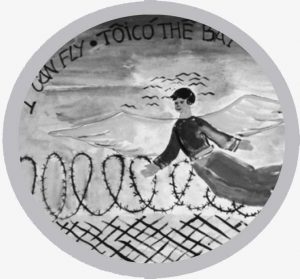 The father watched skeptically as the culturally adapted video of the “Prodigal Son” began, but he kept inching closer to the screen as the story unfolded. As the truths of Christ’s sacrifice and the great love of God were explained in their own heart language, everyone in the room watched intently. At the end, the father’s nose was nearly touching the screen as he exclaimed excitedly, “This is the very first movie I have seen in my own language and I like it very much. Everything in it is true.”
The father watched skeptically as the culturally adapted video of the “Prodigal Son” began, but he kept inching closer to the screen as the story unfolded. As the truths of Christ’s sacrifice and the great love of God were explained in their own heart language, everyone in the room watched intently. At the end, the father’s nose was nearly touching the screen as he exclaimed excitedly, “This is the very first movie I have seen in my own language and I like it very much. Everything in it is true.”
In response to the family’s open hearts, the team provided follow-up through long-term missionaries; as a result, home fellowships were formed to study the life of Jesus. There is now an indigenous Komering church in Sumatra–the least evangelized island in the world. Stories like this one point to the fruitfulness of developing contextualized media tools for unreached peoples. Below we will look at four defining aspects of our ministry: our goal, vision, strategy, and process.
The goal
Our goal is to produce culturally specific evangelistic and mobilization communication materials for all of the least evangelized mega-people groups of the world. Special priority will be given to these 194 unreached people groups with a population over one million.
The vision
The vision for nation-discipling is to see men and women reconciled to God, released into their gifting, and finding their place in fulfilling the Great Commission. They will do so as they are free to worship and work through their individual cultural expressions in order to impact their own people group and see transformation in every sphere of their shared life.
Case study: the Turks of Turkey
A critical stage in the process for an individual or a people group is moving from the salvation experience into growing as a Christian. As we wrestled with the needs of new believers, God led us to use the same principles we had used in creating evangelistic films. Our plan was to develop a DVD depicting a Turkish home fellowship in a Turkish home, with believers dressed in local clothing and speaking Turkish.
After creating the DVD, we were filming an evangelistic drama for the Turks and we noticed several of the actors excitedly reading a major Turkish magazine. To our surprise, we saw shots of our home fellowship film as illustrations for one of the feature articles in this nationwide magazine. The actors translated the articles for us,
describing the recent home church movement in Turkey in a positive manner! We were a little nervous that this massive publicity might deter the Turkish believers’ participation in this present film. Instead, one of them declared, “It is positive; the media is doing the job for us!” Because our film was very Turkish and adapted to the culture, the local media and Muslim leaders were open to receiving the presentation into their society.
The process
In creating any new communication piece, the process begins with an invitation from field workers and nationals to ensure that the media tools will be used and that there is a distribution plan for ongoing usage. Much time is spent prayerfully hearing God’s direction for what media tools to develop, as well as for the overall message to reach the intended people group.
Creating communication pieces is a partnership between the Holy Spirit and us. As we do the research, we are continually in prayer, asking the Lord to give us revelation about the people and the keys to reaching them. As we pray, God highlights the key for that time and group from the research we’ve done. Every script is tailor-made for the specific audience. In the scripting process, our team addresses community issues such as revenge killings, ancestor worship, and stealing. The salvation message is interwoven in a drama of conflict and resolution.
Local cultural advisors are vital to the film’s authenticity. We look for a local person (preferably, but not necessarily, a believer) who is not highly westernized and has a great love for his or her culture. If we’re able to find more than one, we look for men and women in a range of ages and from various walks of life. This whole process of preparation is extensive, but vital.1
Selecting the media
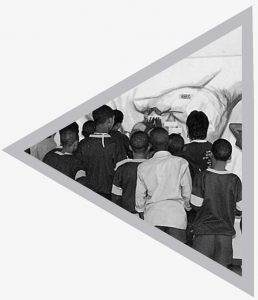 After selecting a message, the next step is to select the media which will have the greatest impact. Options range from the “wow” of new technology to the comfort and authority of familiar art forms. It’s also vital to seek God for how to put together different media effectively for different parts of the process, ranging from salvation to discipleship to community transformation. We must package the Good News in a way that our target people group can hear with understanding and pass on with accuracy. Create International is committed to producing presentations that are carefully researched and sensitive to the culture, symbols, and worldview of the target people group. Great care is taken to ensure biblical, cultural, and linguistic accuracy in all of our evangelistic presentations. Create International is also committed to working with the missionaries on the field to determine the most appropriate media forms to use—whether they be videos, tracts, audio recordings, illustrated flip charts, dramas, etc. This is strategically significant for reaching unreached peoples and nations.
After selecting a message, the next step is to select the media which will have the greatest impact. Options range from the “wow” of new technology to the comfort and authority of familiar art forms. It’s also vital to seek God for how to put together different media effectively for different parts of the process, ranging from salvation to discipleship to community transformation. We must package the Good News in a way that our target people group can hear with understanding and pass on with accuracy. Create International is committed to producing presentations that are carefully researched and sensitive to the culture, symbols, and worldview of the target people group. Great care is taken to ensure biblical, cultural, and linguistic accuracy in all of our evangelistic presentations. Create International is also committed to working with the missionaries on the field to determine the most appropriate media forms to use—whether they be videos, tracts, audio recordings, illustrated flip charts, dramas, etc. This is strategically significant for reaching unreached peoples and nations.
Among the more familiar forms of media are film, radio, Internet, mobile phone, satellite, and microchip players. Film is a powerful medium that attracts a wide audience; it is a community activity, and is cost effective. Radio is giving way to Internet and satellite, which enable us to be in touch with people thousands of miles away in an instant. In many countries, Internet usage is doubling every one hundred days, and even in impoverished countries many people go online in various ways (Internet cafes, schools, etc).2 Less well-known are solar-powered microchip players, only the size of a credit card, which provide audio Bible stories with no need for electricity and can be programmed in any language.3 Media doesn’t have to be high-tech, just appropriate.
Case study: Tibetan Buddhists
Tibetans portray their Buddhist teachings in a circular type of artwork called a thangka painting. A missionary working among the Tibetans in Nepal gave the Gospel of Luke to a professional thangka painter and asked him to paint what he read. In the typical circular format, the thangka depicted the life of Christ with  meticulous clarity showing the birth, miracles, teachings, last supper, death on the cross, burial, resurrection, and ascension. The artist clearly presented how Jesus, coming from the outside, broke through the futility of the “Karma chain” by his resurrection.
meticulous clarity showing the birth, miracles, teachings, last supper, death on the cross, burial, resurrection, and ascension. The artist clearly presented how Jesus, coming from the outside, broke through the futility of the “Karma chain” by his resurrection.
We utilized this local medium in one of our evangelistic films for Tibetan Buddhists. After viewing it, Tibetans ask questions like: “Jesus can really liberate me?” “There are other Tibetans who believe in Jesus?” and “How can I become a believer in this Jesus?”4 To add to the excitement, the painter of the thangka became a Christian and is walking with the Lord today.5
This case study illustrates an important principle: to be effective communicators, we must not only translate what we want to say into the appropriate language, but also communicate our message using the appropriate cultural symbols so that our audience is able to understand it readily. Contextual media is also the best form to ensure continued use by the target audience.
From evangelism to church planting: discipling new believers
Video discipleship tools are being created to help new believers of a particular people group understand how to start contextual home fellowships that are both faithful to Scripture and relevant to their culture. The response has been dramatic. The local actors, themselves believers from a Muslim background, told us that these films would also be very effective for evangelism, which has proven to be true for many people.
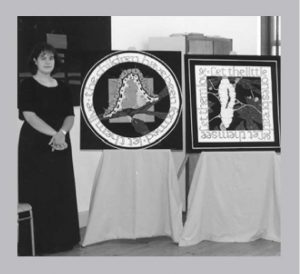 In South Sumatra, a new believer was viewing the contextual worship video with his wife, who was not yet a believer. After the presentation, his wife exclaimed, “If that is what you have been talking about, then yes, I am interested. I could worship Jesus like that!” One of the participants in the film, an actual churchplanting leader in the community, showed the Indonesian contextual film to the Islamic evangelistic association in his area. After viewing the film, one of the Muslim leaders said, “I believe in Isa al Masih [Jesus the anointed Savior]. How can I become a believer and be baptized?”
In South Sumatra, a new believer was viewing the contextual worship video with his wife, who was not yet a believer. After the presentation, his wife exclaimed, “If that is what you have been talking about, then yes, I am interested. I could worship Jesus like that!” One of the participants in the film, an actual churchplanting leader in the community, showed the Indonesian contextual film to the Islamic evangelistic association in his area. After viewing the film, one of the Muslim leaders said, “I believe in Isa al Masih [Jesus the anointed Savior]. How can I become a believer and be baptized?”
One of the greatest hindrances for Muslims to come to Christ is their preconceived idea about the nature and practice of Christians. If they can see that there are followers of Jesus who look like and worship like they do, they see how they too can be a part of this new family—a family that loves and follows the teachings of Jesus (Isa in Arabic) and that remains “fully submitted to God” (the call of all Muslims). God knew that this type of presentation was just what many Muslims were waiting to see and hear.
Putting it all together
Technologies are being increasingly integrated, and this convergence will spark a revolution in how we see and interact with our world. As Christians and communicators of the Good News, we must constantly seek to utilize all forms of technology, and take advantage of new innovations to ensure wider and more efficient communication of our message worldwide.
Notes
1 Http://www.createinternational.com
2 Http://theinternetmission.com
4 Tibetan worker’s personal communication, letter in 1992.
5 Report from field missionaries in Tibet, 2000.
Biography
Calvin and Carol Conkey are the Founders and International Directors of Create International, a global ministry of Youth With A Mission (YWAM) focused on producing effective media resources for unreached people groups. Since 1979 they have served as full-time media missionaries, producing hundreds of audio-visual resources and ministering in over fifty nations. Calvin has an MA in Intercultural Development and Carol holds an MA in Intercultural Communication. They serve on several YWAM leadership teams, including the University of the Nations College of Communication, International Frontier Missions, and Contextual Resources, and Carol is a member of the Lausanne Strategy Working Group. Currently, Carol and Calvin live in Chiang Mai, Thailand, directing the Global Communications and Resource Center. Along with their staff, they continue to produce extensive media resources for unreached people groups, which can be found at www.createinternational.com and www.indigitech.net. They recently authored a chapter, “Media that Transforms Nations,” in the book His Kingdom Come (YWAM Publishing, 2008).They can be reached at [email protected].
« Intentional Listening & Prayer What Language Does God Speak? »
